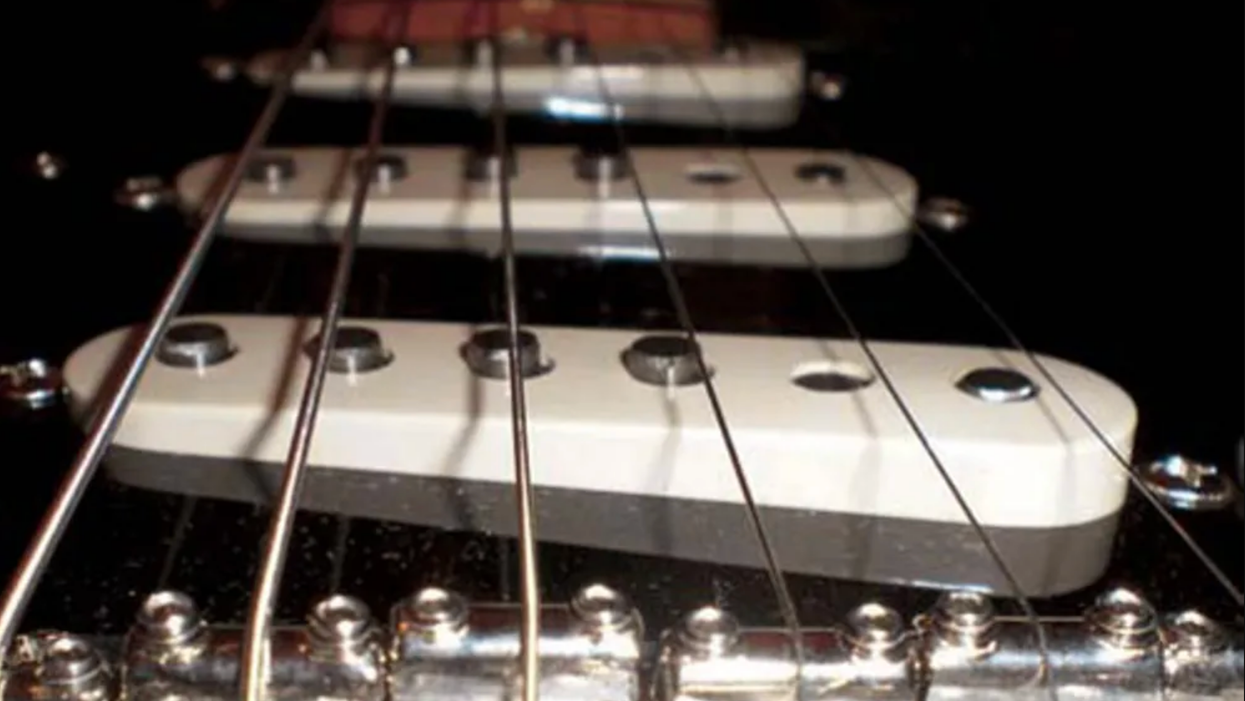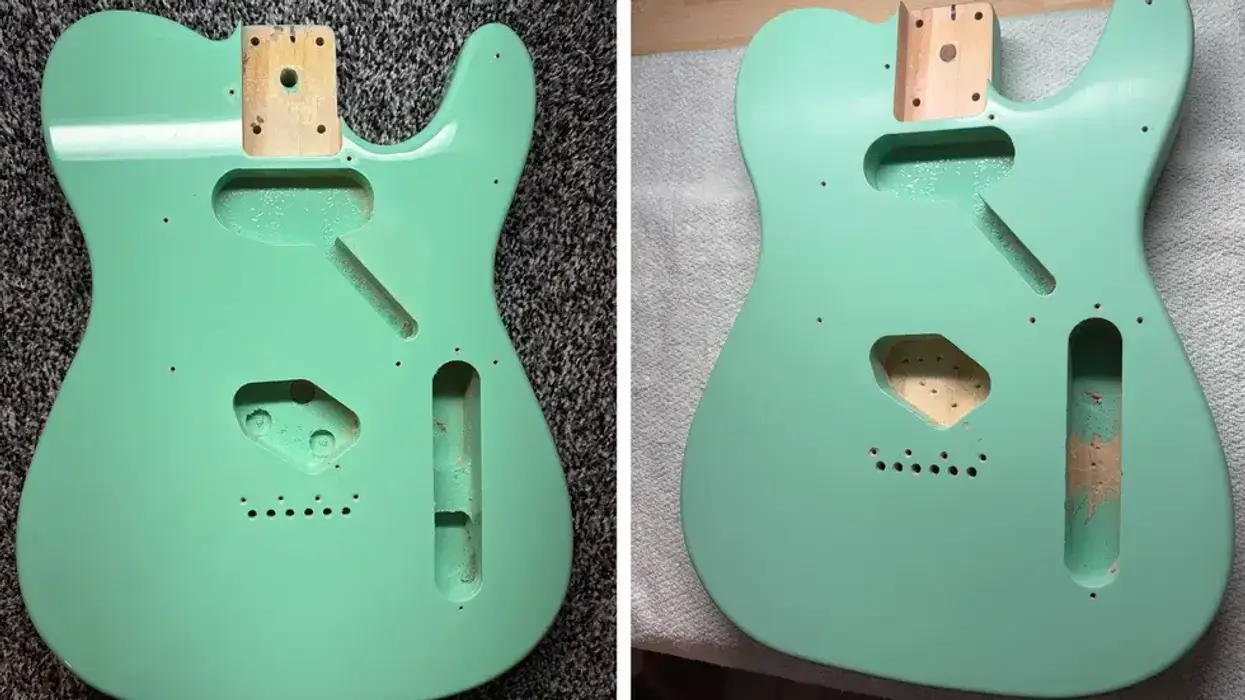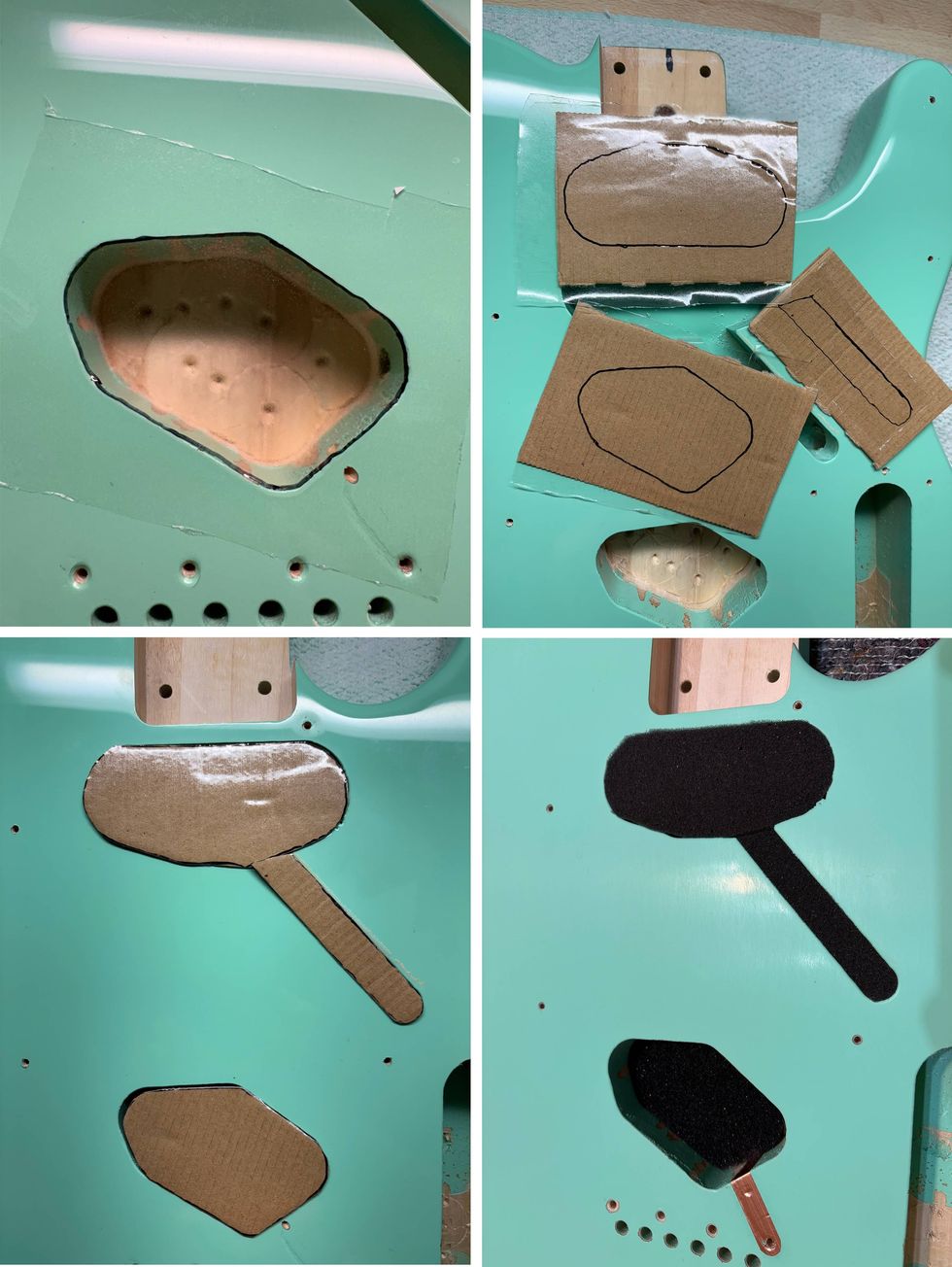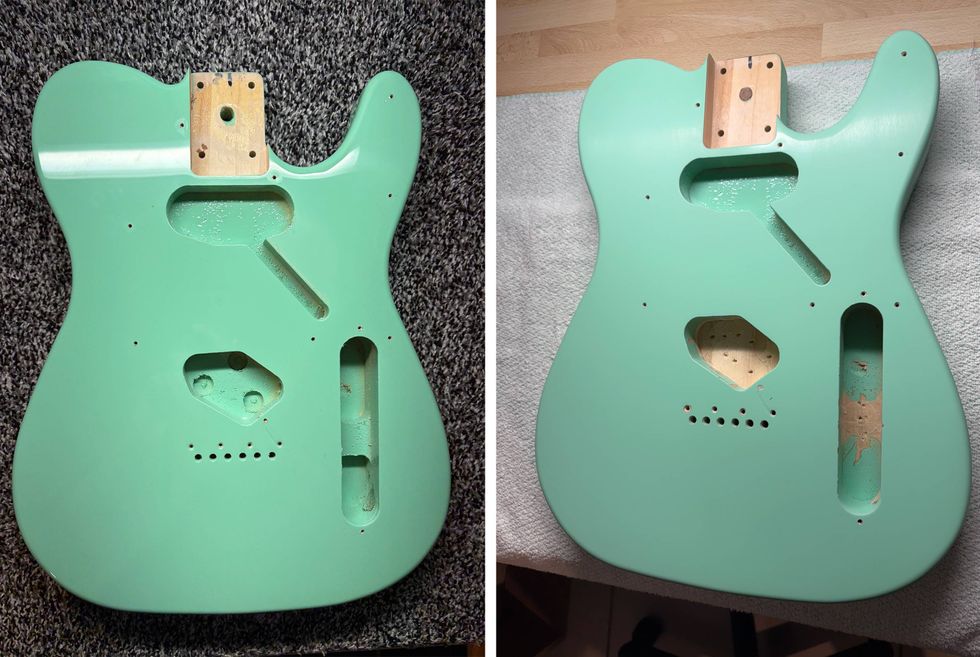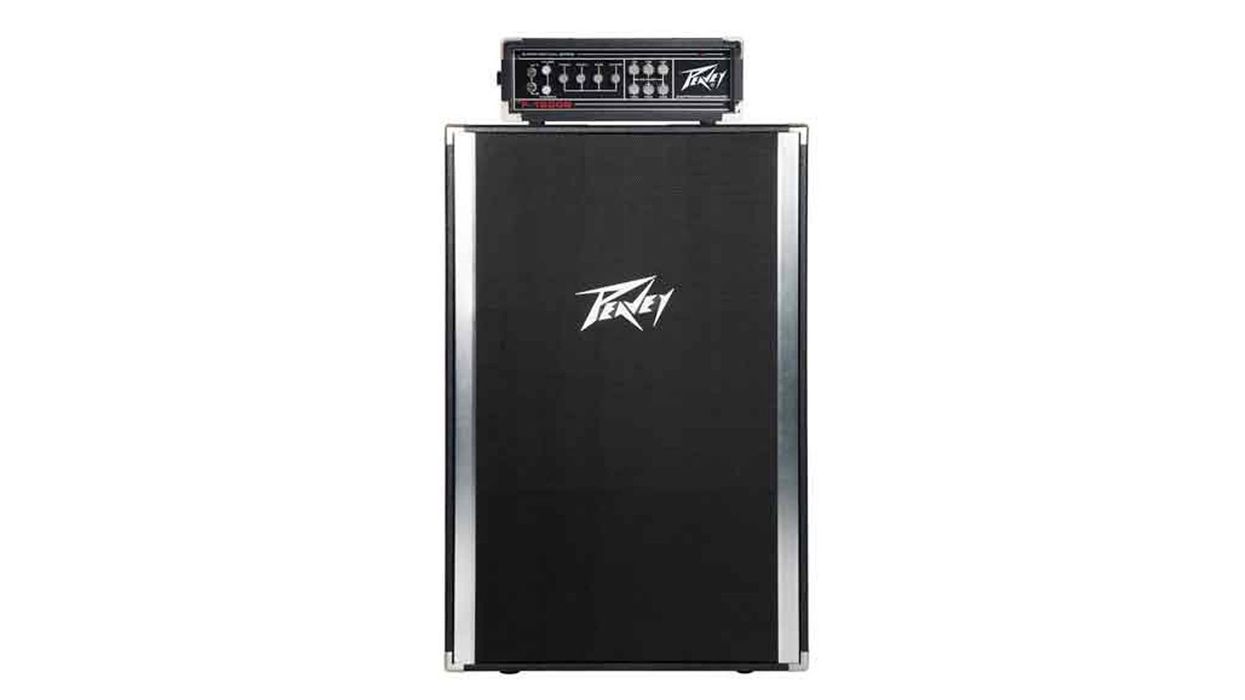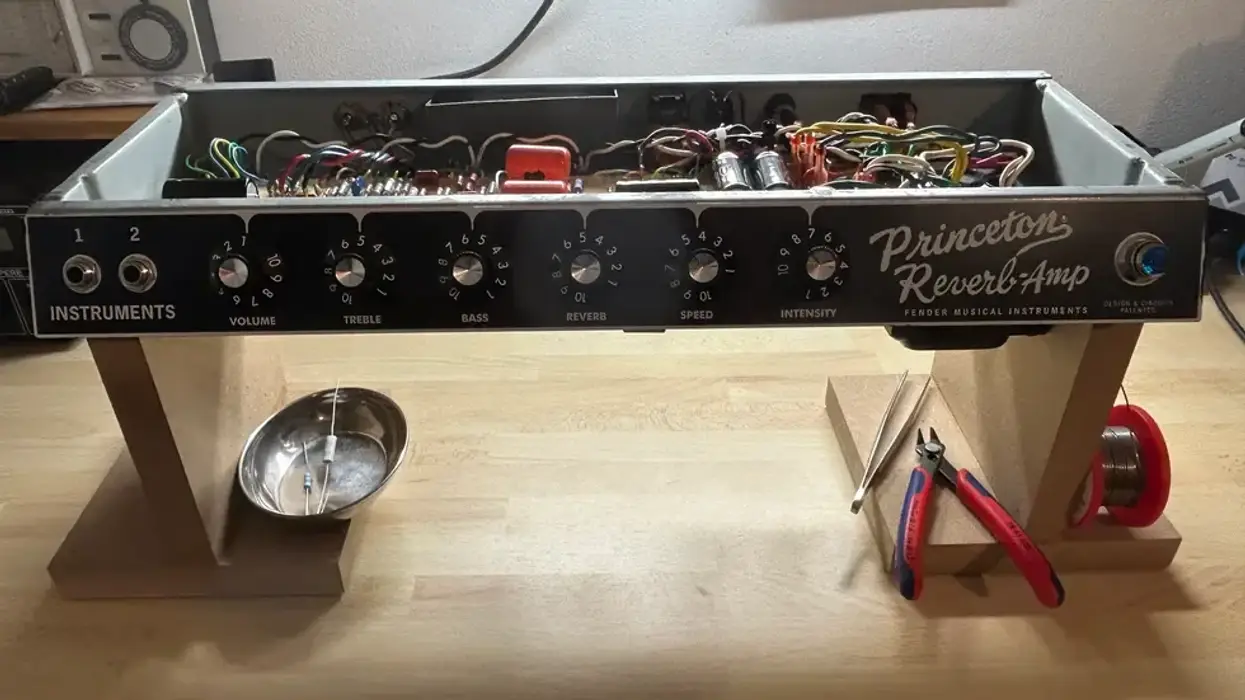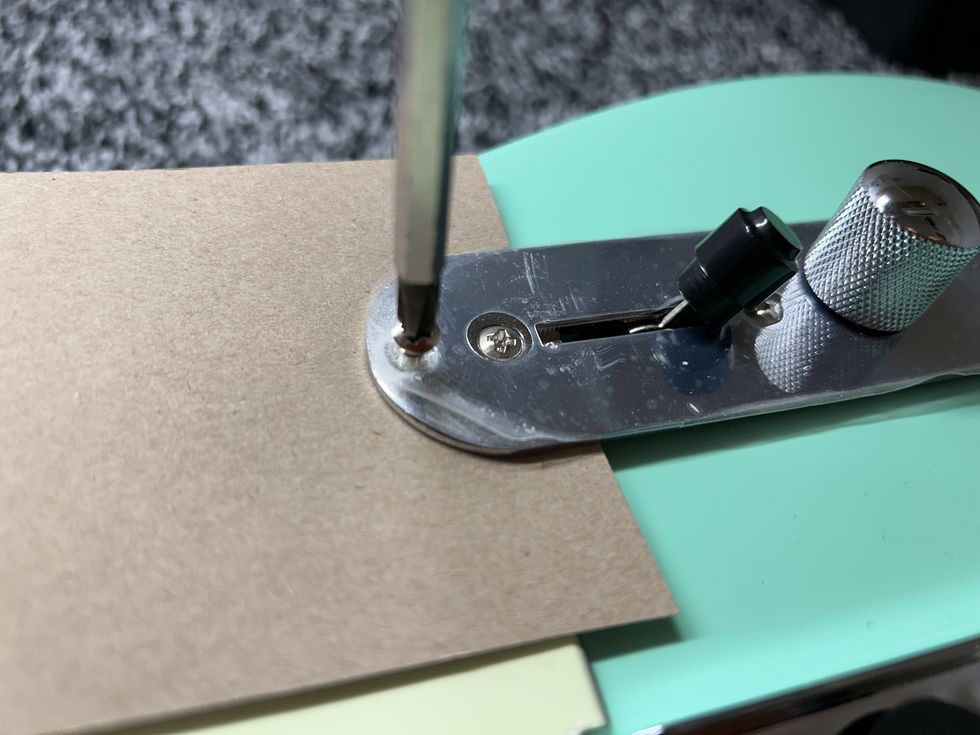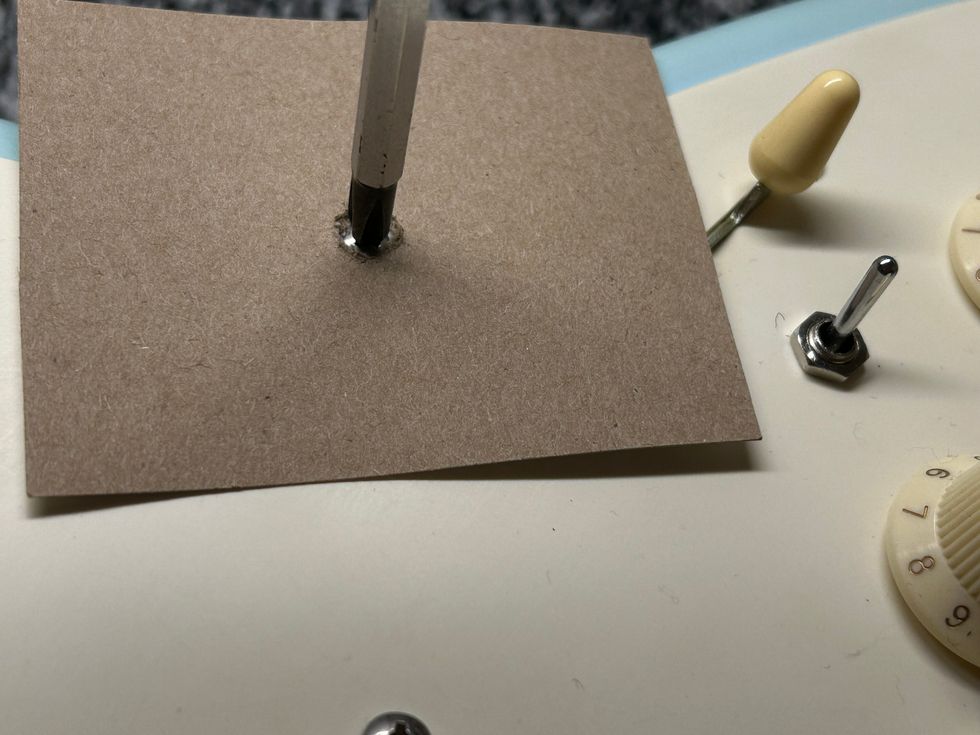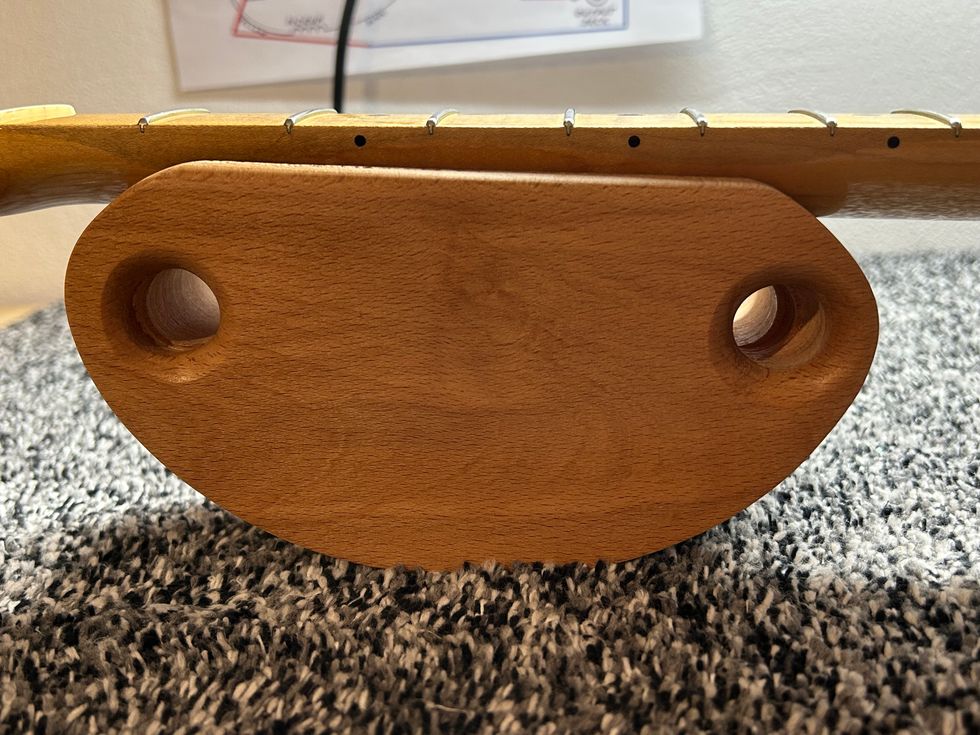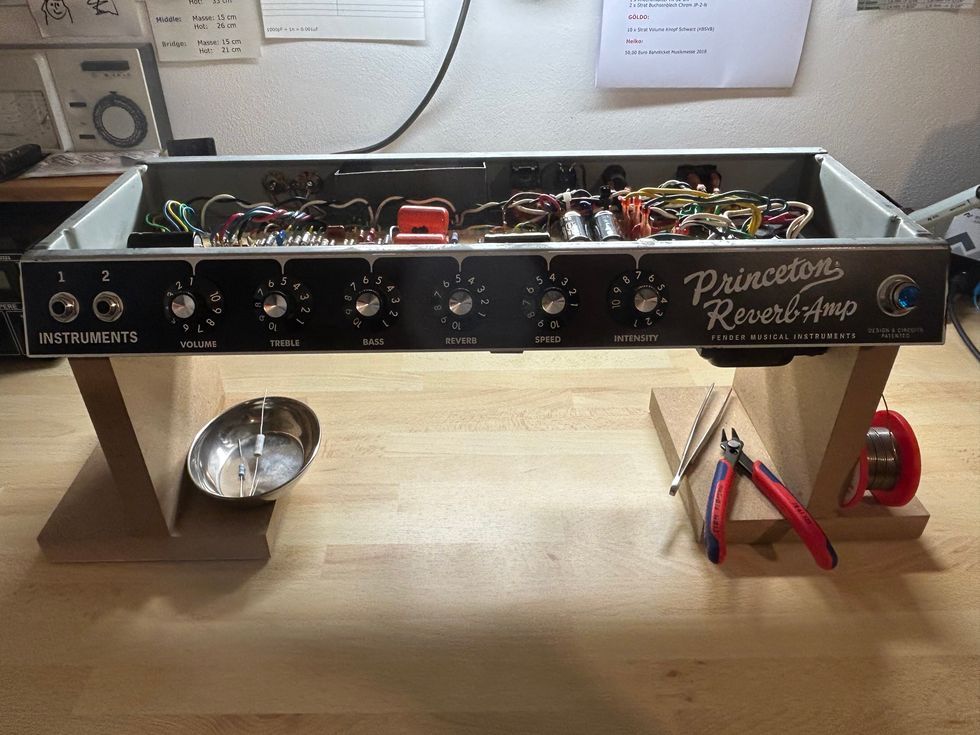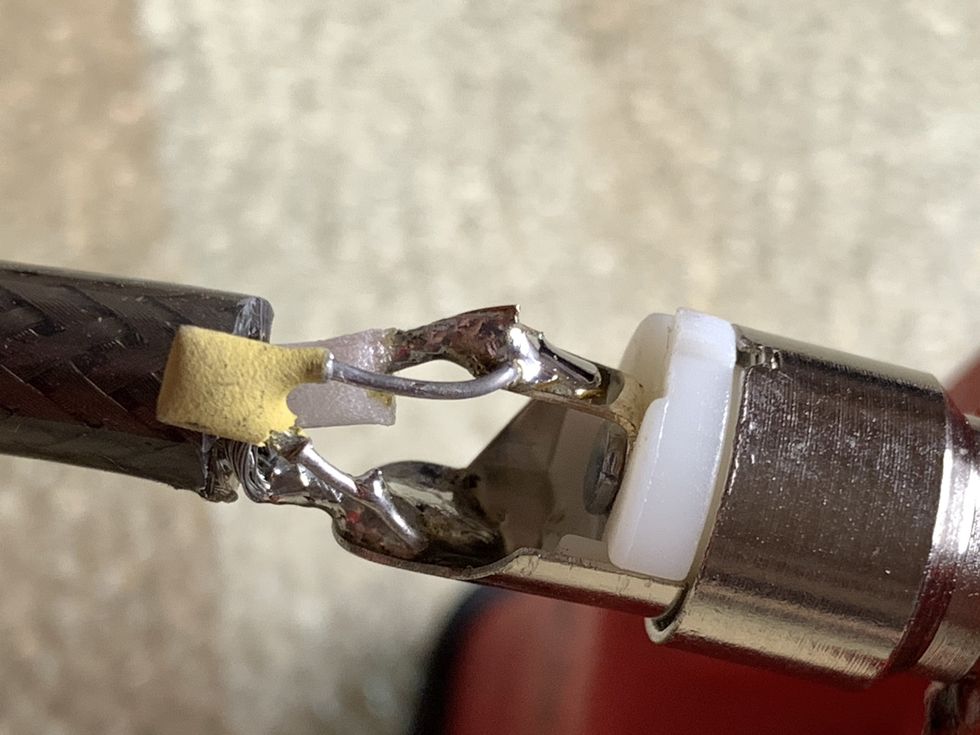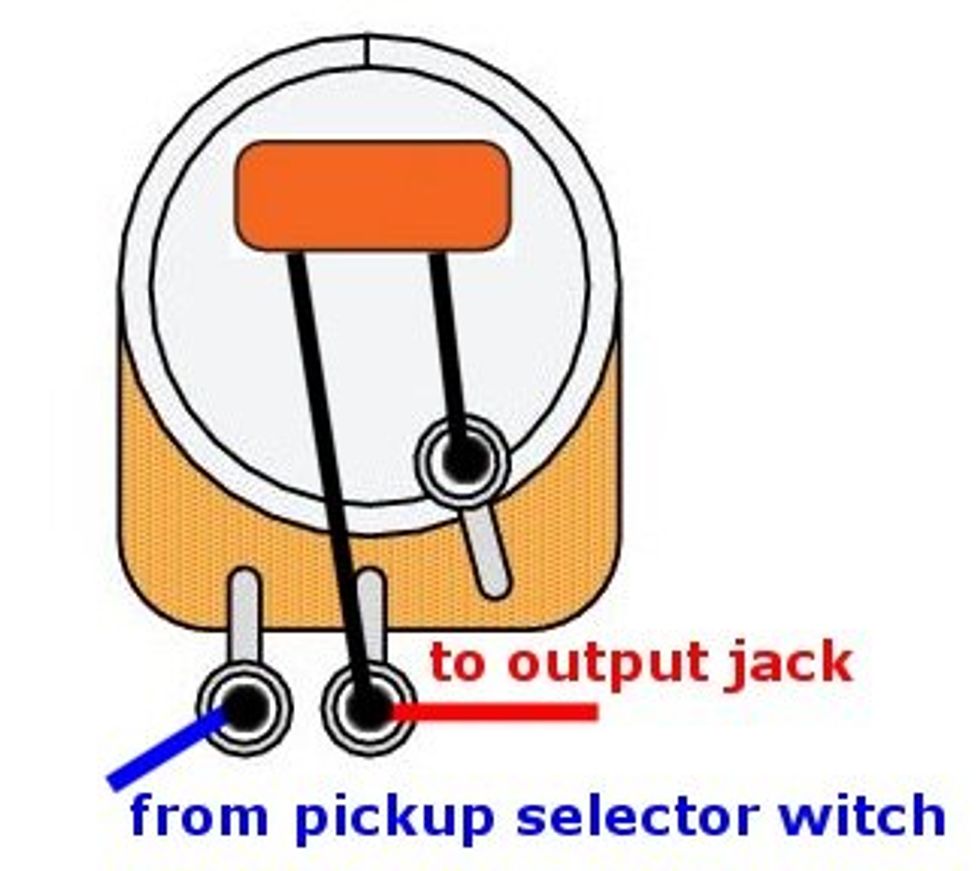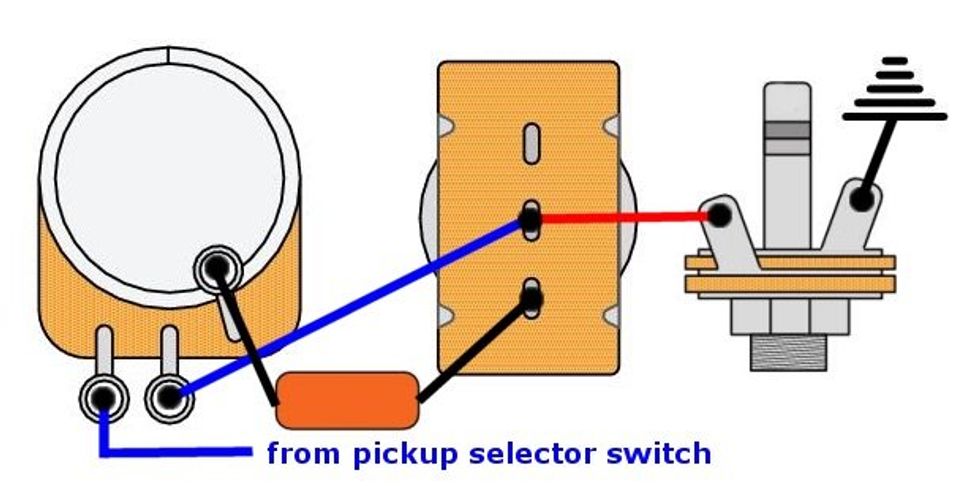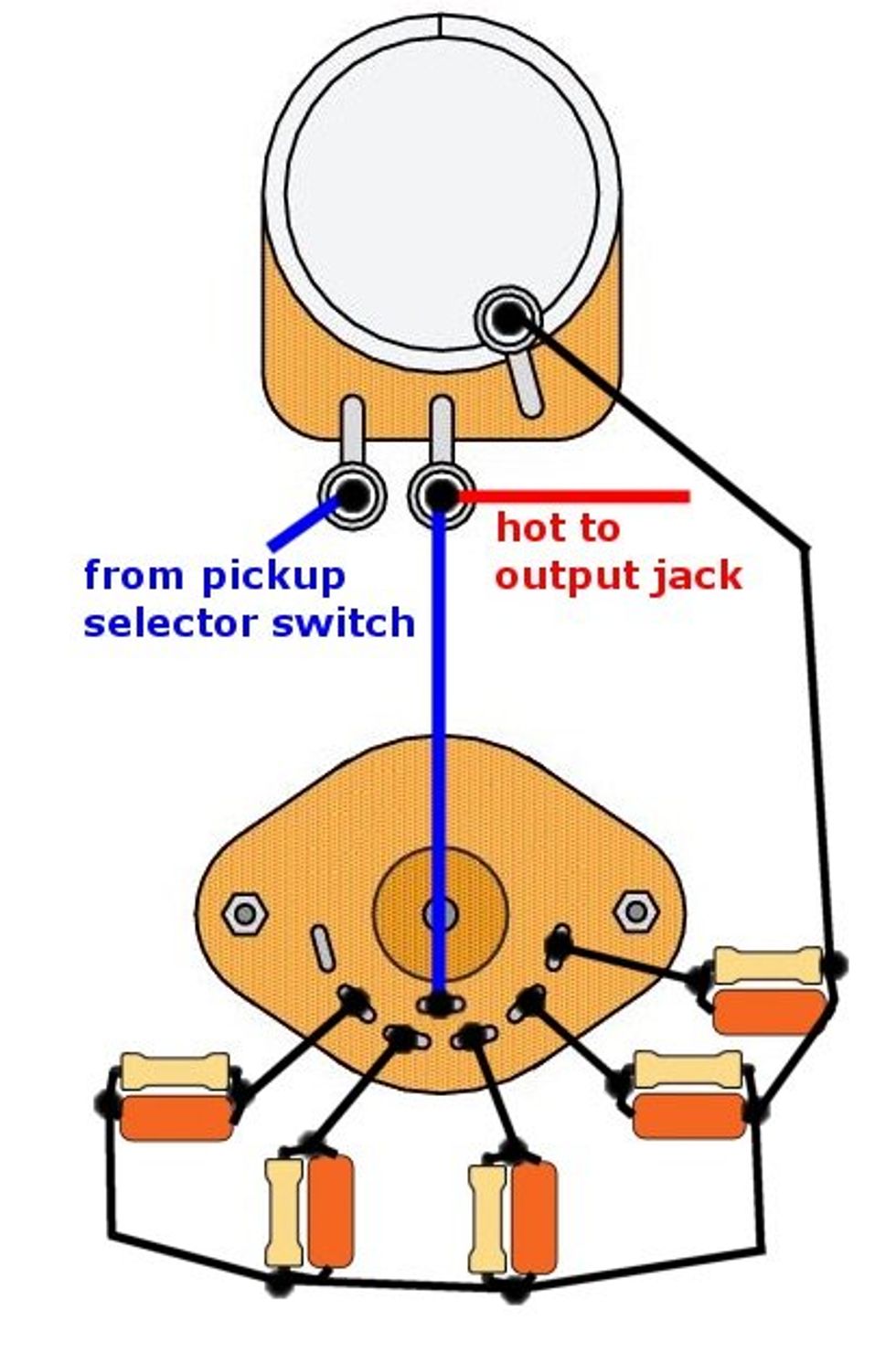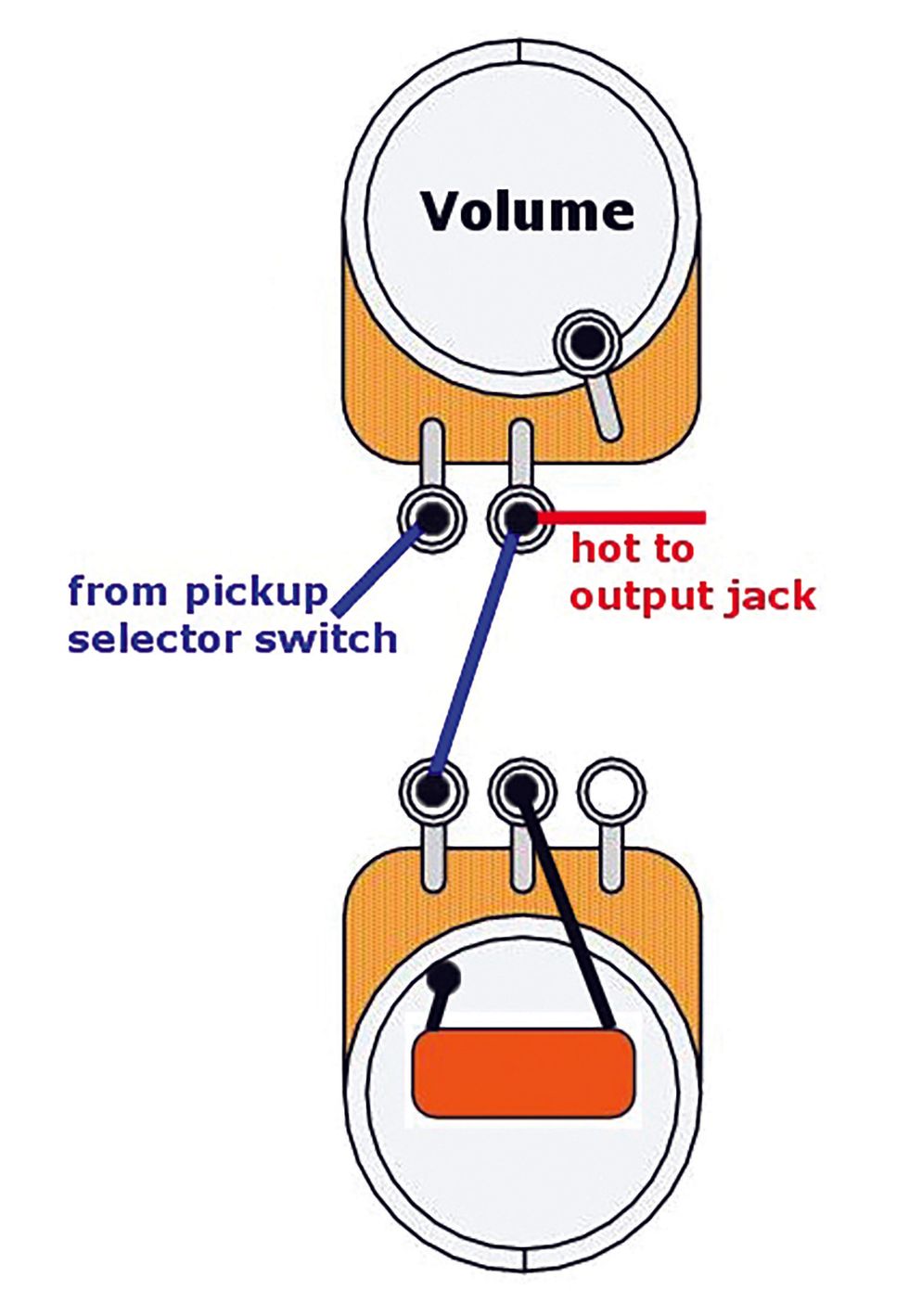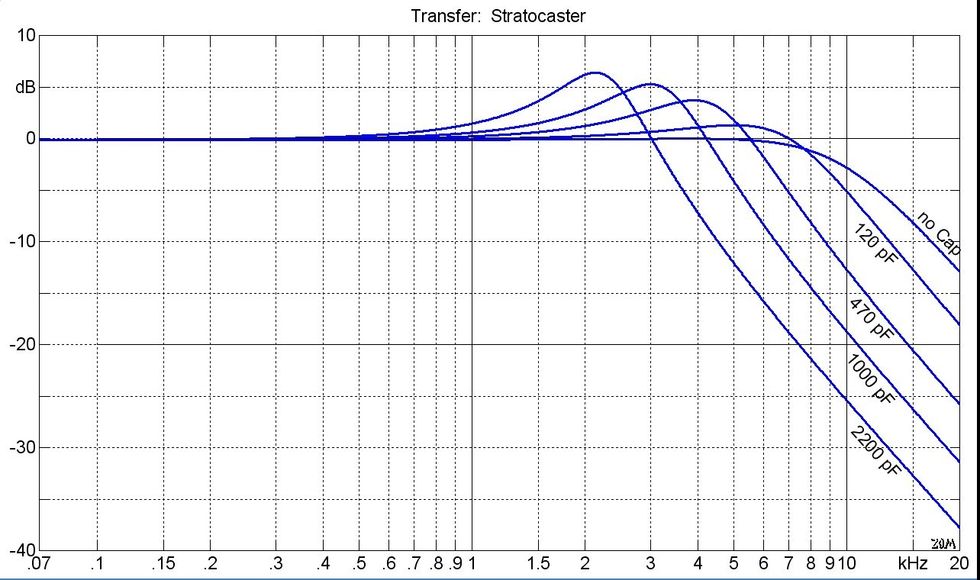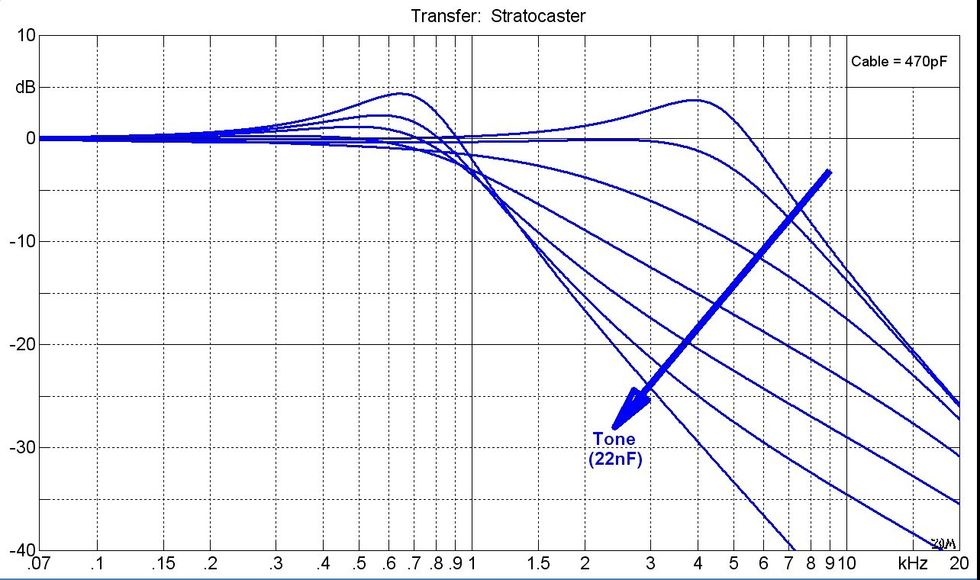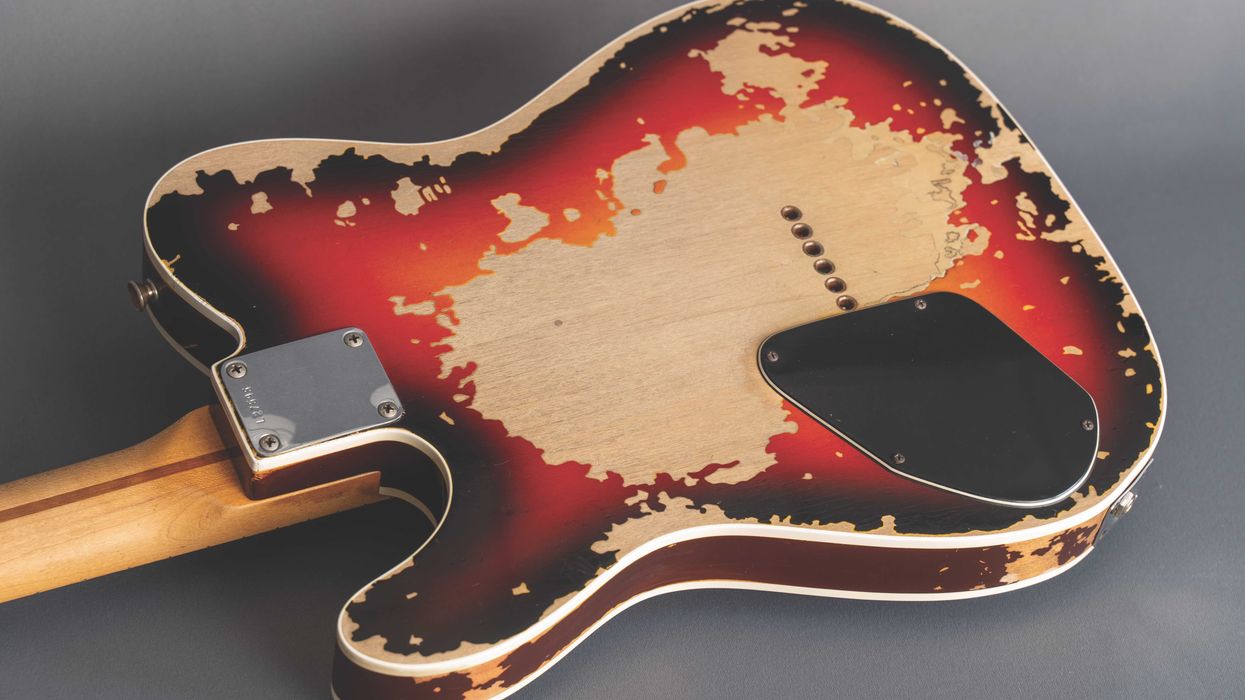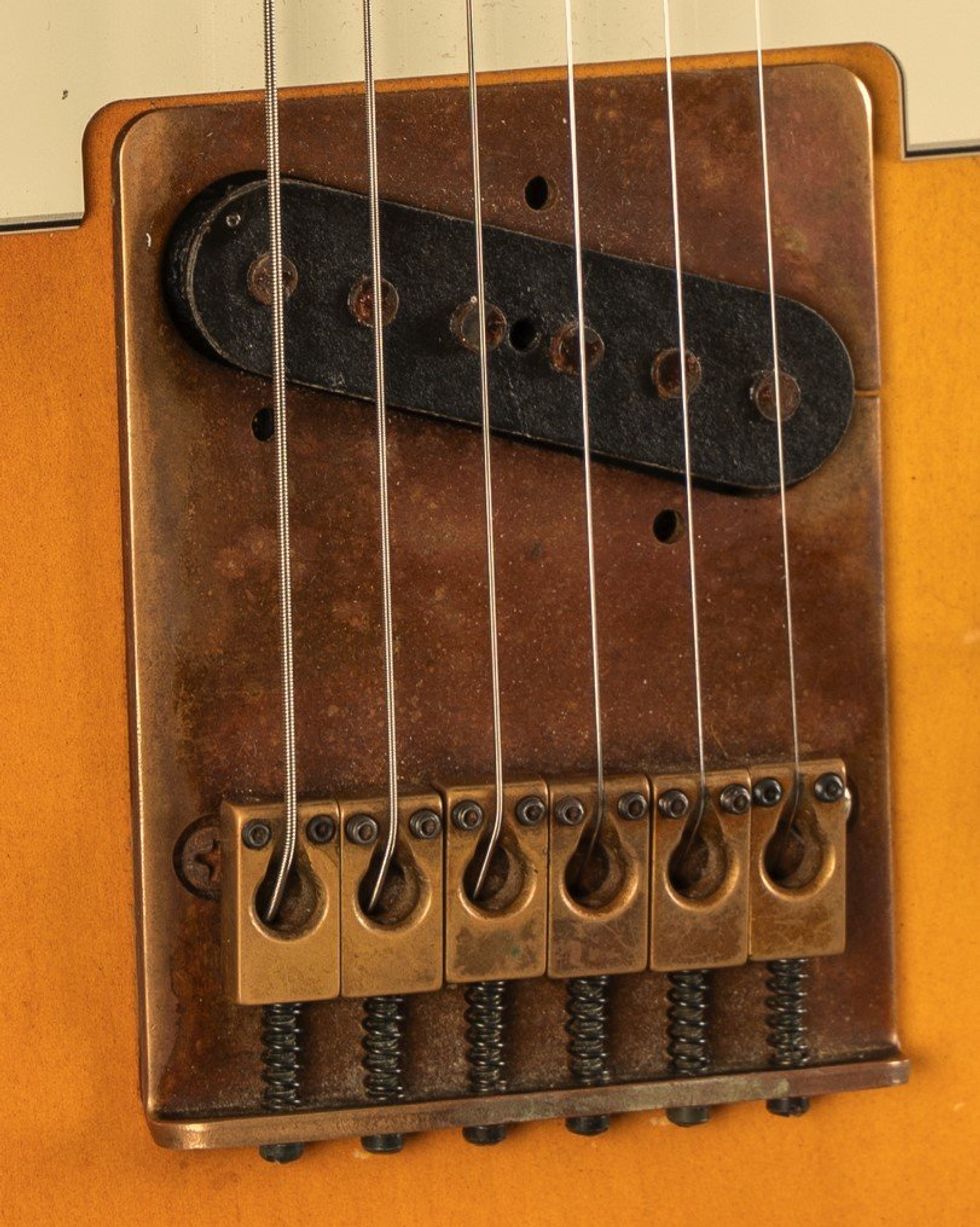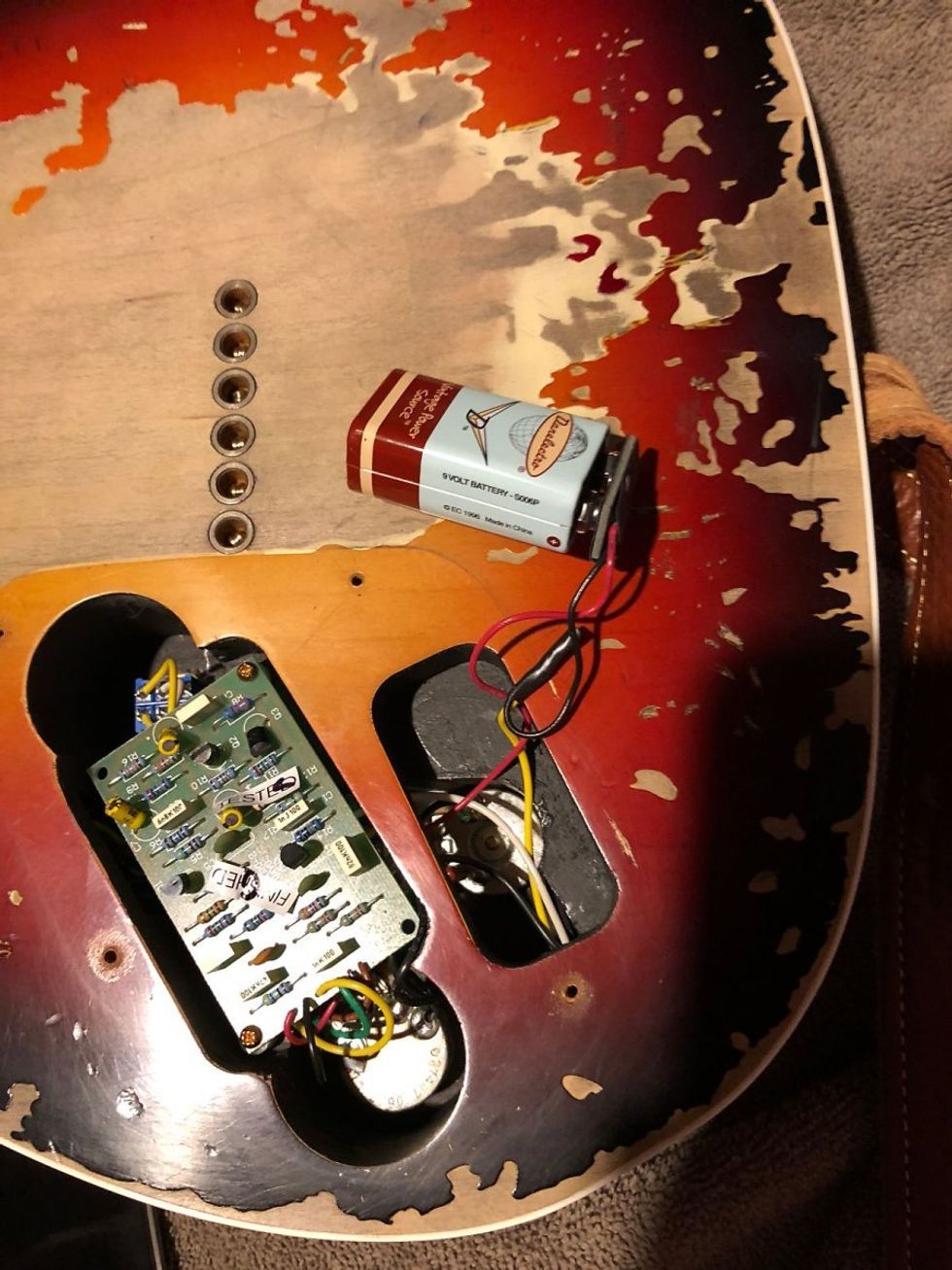Last month we began exploring the fine art of tweaking a Stratocaster's pickups ["
Adjusting Stratocaster Pickup Height, Pt.1," June 2011]. If you experimented with the specs we covered, I'll bet you're still surprised and amazed with the results. Hopefully, your Strat never sounded better. Who knew you could mod it by simply turning six screws?
As I mentioned last month, if you're tonally satisfied after making these adjustments, leave the new settings alone and have a good BBQ. If you feel that it sounds better than before but you still miss that certain something, read on for some good sweet-spotting fun.
After following last month's instructions, when you look along the strings from the bridge toward the neck, your pickups should look something like the image above.
Before we get out the screwdriver again, let's define "sweet spot." For me, this is the height at which each pickup sounds best by itself. So sweet-spotting is the process of finding this magical place. I don't know who came up with this term or when it was introduced, but today you'll hear it whenever guitarists gather to share nuts-and-bolts Strat lore. (One of my customers from Italy calls it "the electrical G-spot.")
The sweet spot is very small—a quarter-turn of the screws can spell victory or defeat. Here are some tips on how to prepare for and then initiate the sweet-spotting procedure. (Note: Always sweet-spot with your guitar in regular playing position—not on a table or workbench.)
The first step is to play your Strat for a few days after doing the basic adjustments we covered in Pt.1. This is crucial, because it makes it much easier to recognize subtle sonic differences when adjusting the height. The second step can't be done in a hurry or when you're stressed—you and your ears should be fresh and rested: Put a set of new strings on and tune up. Then, using a short, high-quality cable, plug into your amp's clean channel. Switch off the reverb and tremolo, and don't use any pedals or effects.
Once you've made these preparations, it's time to begin. Essentially, there are three different ways to sweet-spot a guitar, although you can also combine them to find your own tonal heaven. Regardless of the method, always start with the bridge pickup and work toward the neck unit.
Sweet-spotting for a specific function.
This is the easiest and least time-consuming approach, but still very effective. And it's logical: If you want more output, raise it closer to the strings. But don't overdo it! Raising it too much will cause its magnetic field to pull too hard on the strings, resulting in a weird sound and tuning problems that some guitarists call "Strat-itis." If you need more output than you can get before the onset of Strat-itis, you'll need a hotter pickup.
If you want a softer, more mellow sound, lower the pickup. Don't overdo it here, either. Lowering it too far degenerates sound quality and vibrancy.
Want a little more oomph? Raise the bass side and lower the treble side. If you want more treble, do the opposite.
Sweet-spotting to compensate for pickup volume.
A lot of players want even output between all three pickups so there isn't a volume drop when flipping from one pickup to another or when using the "in-between" settings.
Pickups deliver a slightly different volume depending on their position. This is because there's minimal string movement close to the bridge, and it increases as you move toward the neck. The greater the string movement, the greater the volume and output. If you don't compensate for this, you'll get weak output from the bridge pickup and too much from the neck pickup. This is why the bridge unit should be closest to the strings.
As always, start with the bridge pickup. Once it sounds right, flip to the middle pickup and compare its volume. If the middle pickup is too loud, lower it slightly, checking its volume against the bridge pickup. Do the same with the neck pickup, alternately comparing it with the bridge and middle pickups. If you're satisfied, take a short break and then fine-tune the dual positions (bridge-plus-middle, middle-plus-neck).
Trust your ears. There are no absolute rules, and if you like a slightly unbalanced combined pickup sound, go for it—it's your tone! Keep in mind that getting the pickups to sound great alone and in combination will always be a compromise.
Sweet-spotting for maximum tone.
This is the supreme discipline of sweet-spotting. You need plenty of time to do it right, and you'll have to redo it if you change your string gauge or action. Again, the sweet spot is very small. Sometimes you'll hit it with less than a quarter turn of the screw. Here's the most common method: Raise the pickup until you hear signs of the aforementioned Strat-itis. Next, lower the pickup until the unpleasant qualities disappear and your Strat sounds normal. Fine-tune the rest by ear, carefully moving the adjustment screws a micro-turn at a time. On a lot of guitars, you'll suddenly hear a sort of natural vibrato when you find the sweet spot. This can be an indicator that you're close to—or already at—the sweet spot. Move out of the sweet spot, and you'll lose some of the desirable tone, transparency, string separation, and touch sensitivity.
Don't get frustrated if you don't find the sweet spot immediately—this specialized work takes time and practice. If you aren't successful, try again a few days later. Remember, all guitars are different, and so much depends on your guitar's pickups, strings, and action. Ultimately, your individual taste is the most important factor in this tone quest.
Happy modding!
[Updated 8/10/21]
